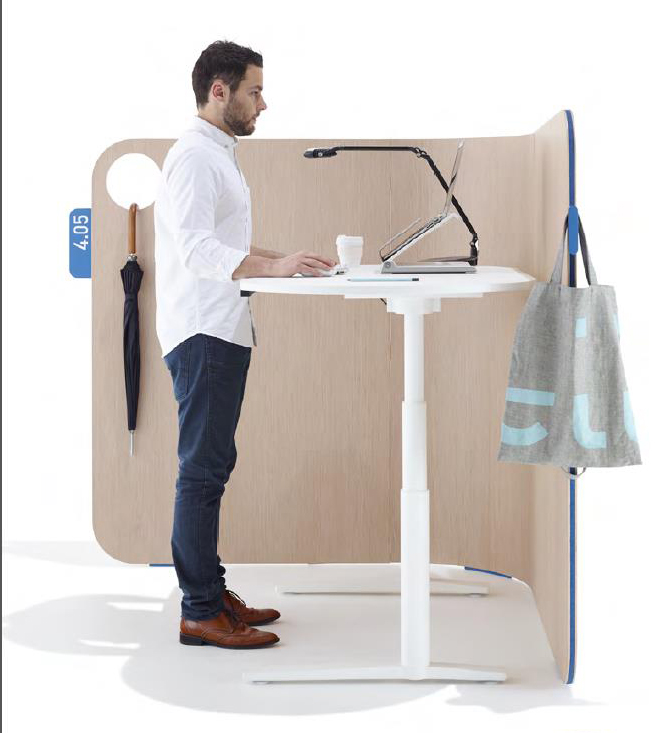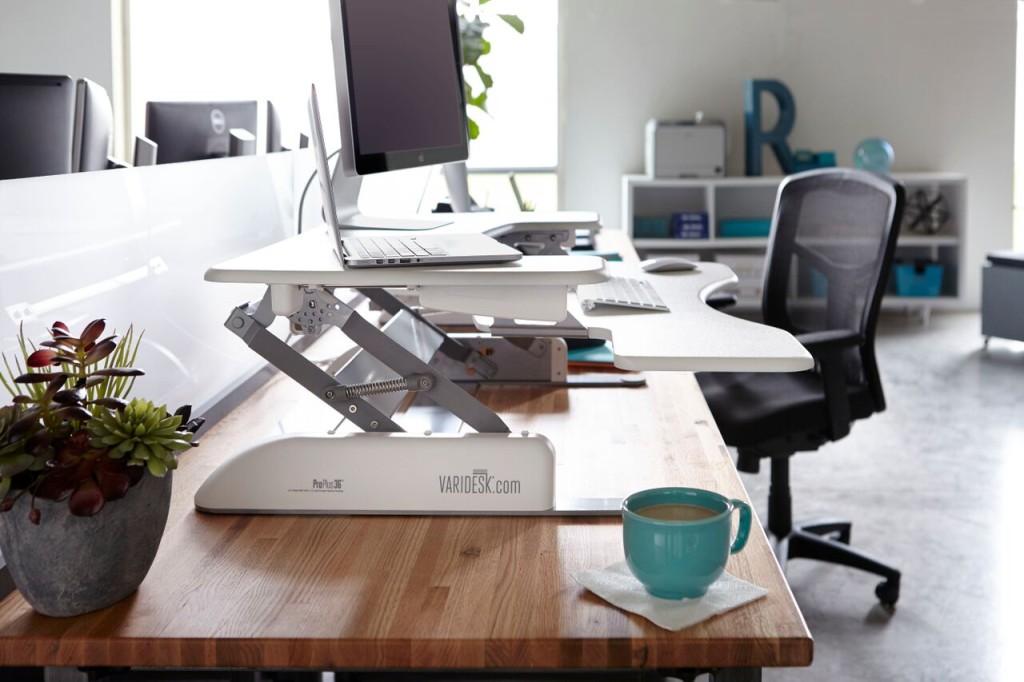Sitting has become a fundamental part of our work day and we don't seem to understand the danger of workplace inactivity. In fact, many of us don’t even realise how inactive we’ve become. A typical day includes a seated commute, followed by hours of sitting at our desk staring at our computer and smartphone screens. This is often only interrupted by a walk to get lunch, pick up a coffee or attend a meeting – where we’ll sit some more!
According to the Australian Diabetes, Obesity & Lifestyle Study, “Australian adults now sit for an average of nearly nine hours a day”. This is longer than the time that most people spend sleeping!
The human body is designed for movement and should alternate between sitting, standing and activity. Employees who spend long periods of time in a seated position are at risk of injury and more prone to a variety of health problems. Research over the last several years has identified the true effects that sedentary work has had on our bodies.
Health Problems & Workplace Inactivity
Many people know when they’ve been sitting too long because their back or neck aches. We can relate to these effects because we can actually feel them, but it’s what you can’t feel or see that you may need to be concerned about.
In 2012, the Heart Foundation’s 45 and Up Study, found that adults who sat 11 or more hours per day had a 40 per cent increased risk of dying in the next three years compared with those who sat for fewer than four hours a day.
The above report and a growing body of other evidence suggests that spending too much time sitting increases your risk of chronic injury, health problems including diabetes, certain cancers, heart disease and even pre-mature death. Experts have also described inactivity in the workplace as “one of the biggest” challenges in health.
Prolonged sitting is thought to slow the metabolism and affect the way the body controls the breakdown of fat. Intensive exercise doesn’t repair the loss of production of fat-metabolising enzymes, so even daily workouts won’t necessarily protect people who spend eight hours a day sitting at a desk.
The Solutions
While in the past employers focused on introducing programs to encourage exercise outside of work, employers are now trying to make office work itself less sedentary. This involves workplace design and giving options to adjust between sitting and standing.
To obtain the health benefits of standing and reduce any potential adverse effects, the best option is to alternate between sitting and standing. In an ideal world you would stand for half an hour to an hour and then sit for a similar time and alternate through the day. Our message is to stand more, sit less and move more often!
Sit/Stand Desks
In a bid to get people on their feet, workplaces are responding with adjustable sit/stand desks, which encourage employees to vary their working position throughout the day.
“We are increasingly seeing our clients adopting the sit/stand movement, in the hope that it will not only improve personal health and wellbeing but contribute to the overall health and productivity of their organisation.” Kelly Tuck I Adentro Design

Schiavello Human Scale Workstations
If you are considering new workstations an option such as Human Scale by Schiavello could be ideal. This means that each employees work surface is independently adjustable in height.
But providing staff with a sit/stand option does not involve a complete refit. Varidesk provide a great option which is simply placed on top of any existing desk. At $350 RRP these offer a cost effective solution for many businesses. One of our clients Chris Mobbs, Manager Corporate Services at Q Super has stated that the Vari brand, sit/stand desk provides “a versatile, cost effective solution that enables Q Super to accommodate the varying needs of both our technology and people”.
When you order from Varidesk, it comes out of the box fully assembled, sits right on top of your existing desk – and in minutes you have the freedom to work standing or sitting any time you want! A recent study by the Heart Foundation called the Stand@Work Study found that the introduction of these type of desks reduced sitting time by 20%. Participants found that tasks easily undertaken while standing included emailing, reading and writing documents. Talking on the phone was seen as more difficult for those in an open plan office.
Other Suggestions to Get Moving
Prolonged sitting is a condition of the work place, not an individual lifestyle choice. If you’re still not ready for a stand-up desk, these tips might help get you get moving to avoid the danger of workplace inactivity.
Employers are encouraged to:
- promote and support standing in team meetings, and during individual desk time
- consider how to introduce job task variation
- supply cordless headsets to allow call handlers to stand and move around their workstation
- encourage workers to eat away from their desks
- locate printers/photocopiers /water coolers away from desks
Employees can:
- stand when on the phone or in meetings
- use the stairs instead of the lift
- eat lunch away from their desk
- take a break away from their computer every 30 minutes and walk to a colleague’s desk rather than phoning or emailing
The sit/stand desk is not a new concept. Thomas Jefferson, Winston Churchill, Leonardo Da Vinci, and Ernest Hemingway all understood the danger of workplace inactivity. They fought off the urge to sit with the aid of standing desks. It might be time for you to do the same, and alternate between sitting and standing.
Companies need to acknowledge the danger of workplace inactivity and make employees aware of how to counteract it. By supporting these measures, companies will benefit from a healthier work environment with better productivity levels and reduced employee absence costs.
Can you afford to ignore the cost of inactivity in the workplace?










